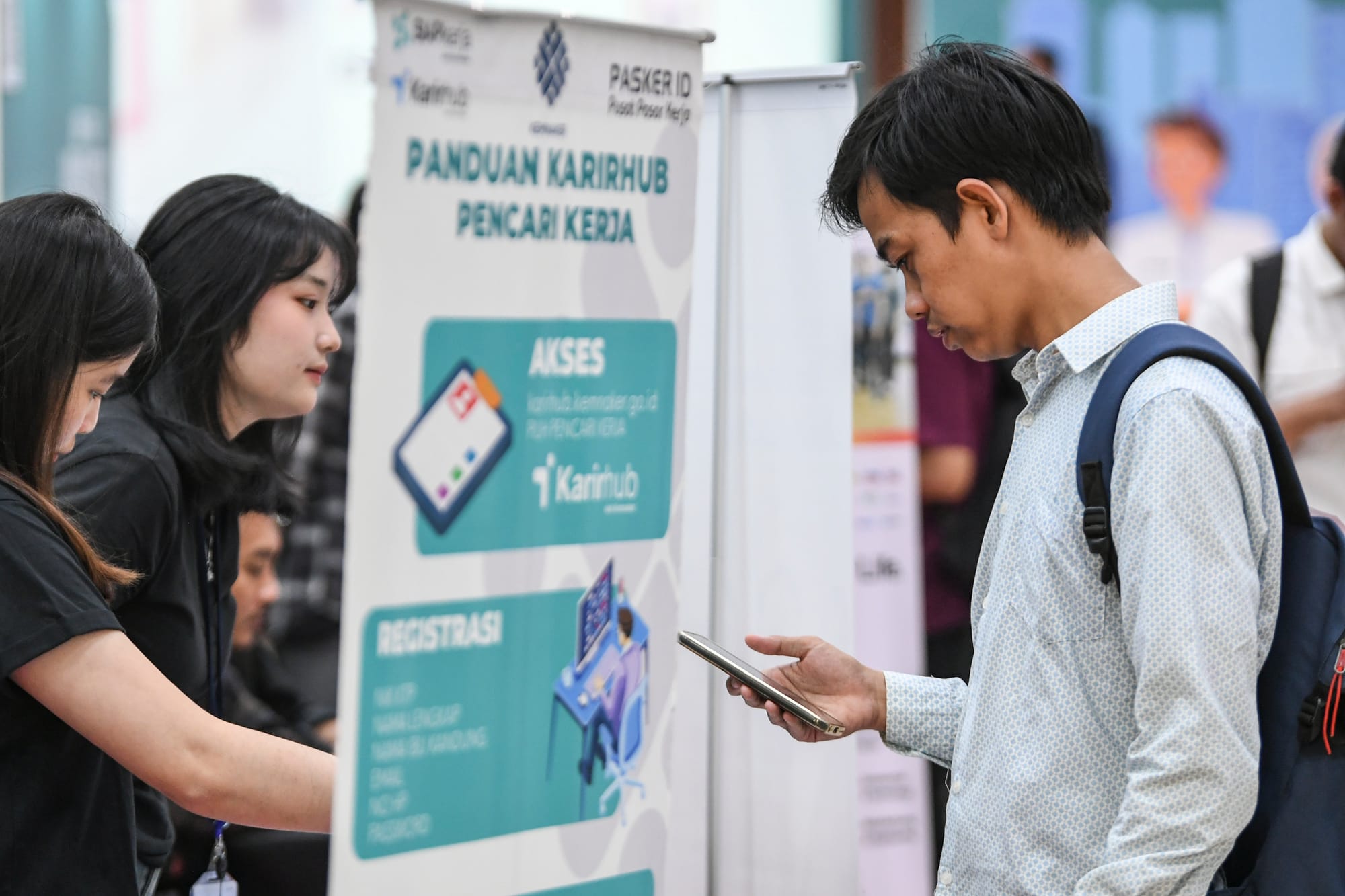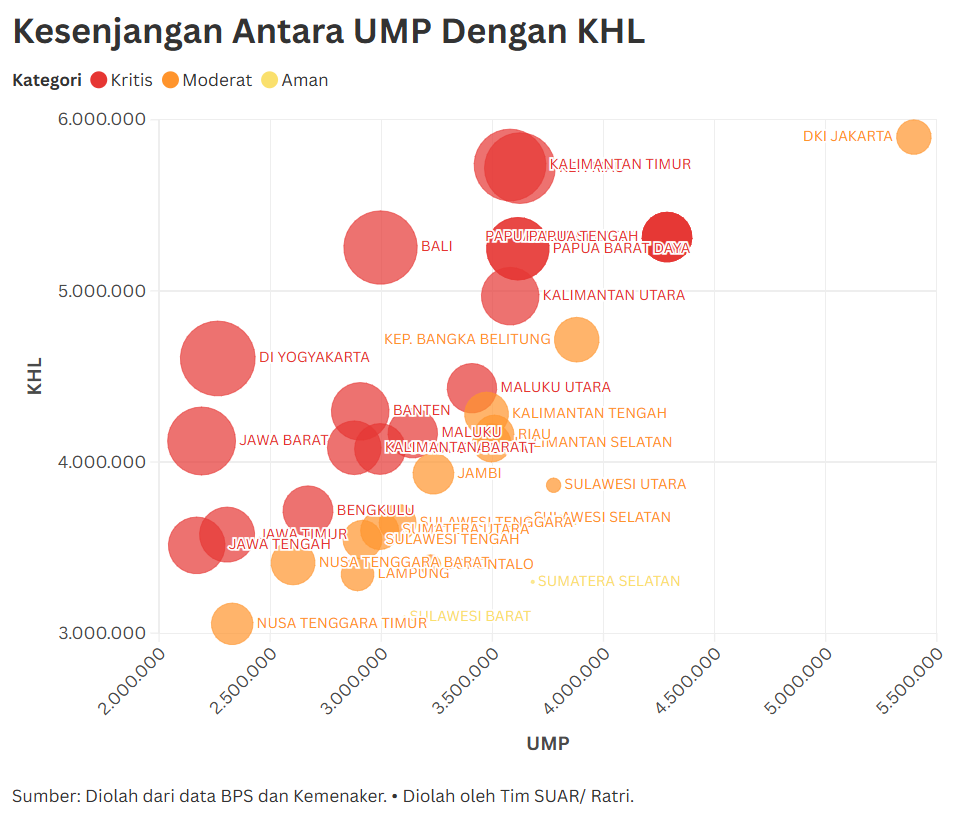The issue of employment has been reignited after President Prabowo Subianto, in his State of the Nation Address at the Plenary Session of the People's Consultative Assembly (MPR-RI) on Friday (15/8/2025), mentioned that the unemployment rate continues to decline. Despite various debates, the solution that can be offered to realistically reduce unemployment is to strengthen the middle class.
In his first annual State of the Nation Address, President Prabowo stated that employment is one of his areas of concern. His steps, among others, include accelerating investment in downstream natural resources through the establishment of the Danantara Investment Management Agency (BPI).
"Andantara will create millions of quality jobs, especially in the downstream sector. Alhamdulillah, today the national unemployment rate has dropped to its lowest level since the 1998 crisis," Prabowo told the Assembly.

The President's statement is in line with data collected by the Central Statistics Agency (BPS). The latest BPS National Labor Force Survey (Sakernas), in February 2025, showed that the open unemployment rate reached 4.76%. This figure reflects the downward trend that has occurred over the past 4 years from 6.62% in 2021; 5.83% in 2022; 5.45% in 2023; and 4.82% in 2024.
Head of the Manpower Planning and Development Agency of the Ministry of Manpower Anwar Sanusi said, in statistical data, it can be said that there was a decrease compared to the previous year.
"So this is a record that we can claim as a success, especially after the 1998 Reformation and the Covid-19 pandemic," Head of the Manpower Planning and Development Agency of the Indonesian Ministry of Manpower, Anwar Sanusi, told SUAR, Saturday (16/08).
Furthermore, according to Anwar, the labor force participation rate represents a 0.8% increase - from 69.8% in 2024 to 70.6% in 2025.
"These two data can motivate positive signals without closing the layoff data-which we will deliver shortly-as comprehensive information about our employment conditions," he said.
Differences in public and government perceptions of what constitutes unemployment can only be resolved if fundamental issues such as open unemployment and absolute poverty are truly understood.
Regardless of the basis for statistical calculations that show positive developments, Chairman of the Employment Division of the Indonesian Employers Association (Apindo) Bob Azam emphasized that the president's statement in the state speech should not be immediately accepted. According to him, differences in public and government perceptions of the definition of unemployment can only be resolved if fundamental issues such as open unemployment and absolute poverty are truly understood.
"These problems are experienced by the lowest class of our society, which cannot be abandoned by the government, and therefore make our government struggling," Bob explained when contacted by SUAR.
In such circumstances, according to Bob, the government must mobilize the middle class, which has a high level of consumption, while strengthening the sector that has the greatest labor absorption.
"What drives the economy in Indonesia is the middle class. Lower-class spending does not really create a multiplier effect, but middle-class spending does, so the economy will run if the middle class is helped," he said.
The Vice President Director of PT Toyota Motor Manufacturing Indonesia did not deny that in addition to the government's priority programs such as Koperasi Merah Putih and Makan Bergizi Gratis, which are claimed to open thousands of jobs, there is a role for the private sector in attracting investment that can increase employment.
"Attracting private investment is not easy. If demand continues to fall, which investments will come in? So there is fundamental homework for us to increase people's purchasing power, especially the middle class," he said.
Bob warned that if the government, especially local governments, did not refrain from raising taxes lately while purchasing power was weakening, the national economy could enter a vicious circle.
"We must drive consumption, so that investment comes in, labor is absorbed, and state revenues increase. We must build this cycle. Our task is to identify business fields that can provide greater revenue for state revenue, so as not to burden the fiscal longer, but also provide incentives for economic growth," concluded Bob.
Field conditions
Chairman of the Confederation of Indonesian Labor Unions (KPBI), Ilhamsyah, even regretted the President's statement, which according to him, contradicted the situation on the ground.
"Indeed, we do not have comparative data, but we see in the field the queue of young people looking for work until there was a riot in Bekasi, because the number who wanted to apply was beyond the expectations of the committee. Droves of people come to job fairs in very large numbers to get a job," said Ilhamsyah when contacted by SUAR.
The activist, who is also Chairman of the Election Winning Division of the Labor Party, added that the data on layoffs in the first semester of 2025 almost matched the data on layoffs throughout 2024.
"Is BPS data real data, not manipulative? With the potential of natural and human resources, we as part of the working class also want to be optimistic and hope that economic growth can be double-digit," he said.
Padang Wicaksono, a lecturer in labor economics at the Faculty of Economics and Business, University of Indonesia, explains that the hesitation in comparing statistical data and field conditions is well-founded. The unemployment rate is often synonymous with the open unemployment rate, which is people who are not working at all.
In fact, at the same time, the trend of hidden unemployment increased to 11.67 million workers, equivalent to 8% of the total working population. The hidden unemployment he refers to is workers who work less than 35 hours a week and are still willing to accept additional work.
At the same time, the trend of hidden unemployment increased to 11.67 million workers, equivalent to 8% of the total working population.
Padang suspects that the absorption of formal labor is limited because most job seekers have low educational backgrounds and skills. "This is followed by the dynamics of an increasingly competitive business field that causes layoffs, followed by the push of those who were originally formal workers into informal workers," Padang explained in a written statement to SUAR.
The shift in employment status has implications for a decrease in income and welfare levels, in addition to the protection of workers who can no longer access the benefits of BPJS Kesehatan and BPJS Ketenagakerjaan. Therefore, the declining unemployment rate needs to be understood holistically by taking into account the shift in employment status, given the very dynamic characteristics of unemployment in Indonesia.
Anwar Sanusi added that his office, which is mandated to improve skills, always coordinates with the labor market so that every vacancy can be filled with workers who have the capacity to do the job.
"We can say that there are many positive signals for the future employment prospects, in addition to anticipating layoffs that still occur. From these signals, we hope to be able to supply labor in accordance with competence so as to support company performance," Anwar concluded.






